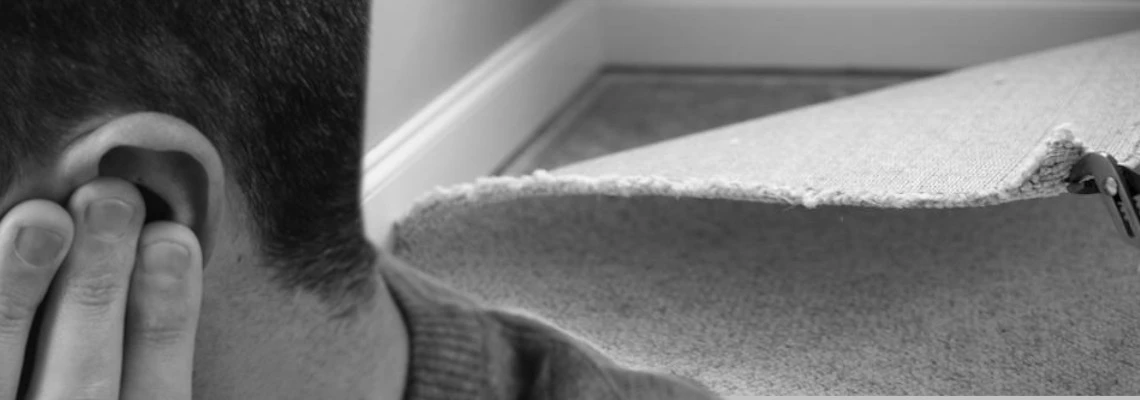
HOW TO STOP CREAKING FLOORBOARDS UNDER CARPET?*
It turns out that the most annoying and repetitive noises in our house can be caused by creaky fridge hinges or the floor we walk on. While the fridge is opened less frequently, we walk on the floor almost constantly. In the UK, floors are usually made of wooden joists, with the subsequent layer covered by floorboards. These types of floors are cost-effective but come with a significant flaw that gives us a headache. It's the annoying long-term noise that occurs at any unstable joints of these floors.
In this article, we'll take a closer look at this issue. By reading this article, you'll find out exactly why your floor creaks, how to prevent it, and what's best to apply to put an end to this problem once and for all.
WHAT MAKES YOUR FLOOR CREAKING?
It turns out that around 90 percent of wooden floors in UK are covered subsequently with carpet underlay and carpet. However, such a setup isn't sufficient to keep the floor quiet in use. Perhaps the carpet itself dampens some of the noise, but it's not enough to completely stop it.
So, what could be causing your floor to squeak? It turns out there could be at least 7 reasons:
1. Unstable floor joists within a solid wall.
2. Insufficient connection between floorboards and wooden joists.
3. Issues within the joints of the floorboards themselves.
4. Missing screws or nails.
5. Lack of connecting elements at the joints between boards.
6. Floorboards cut too snugly.
7. Using materials with excessive moisture content.
HOW TO STOP CREAKING FLOOR ONCE AND FOR ALL?
Let's examine each of the reasons presented individually. This approach will provide a closer insight into the issue of a creaky floor. Each case of a noisy floor is unique, and therefore, it's essential to address it in such a way.
UNSTABLE FLOOR JOISTS WITHIN A SOLID WALL
Floor joists are positioned within a building's structural walls during the construction phase. How they're installed and by whom plays a role in whether we'll encounter problems with noise later on.
Wooden joists supporting the floor's structure should ideally contain moisture levels between 6% and 9%. This also means that at worst, a joist might hold around 10% water, which eventually needs to evaporate. This evaporation is essentially the joists drying out, causing potential changes in their dimensions over time.
What does this mean in practical terms? It means that a joist initially measuring, for instance, 195mm in height and 50mm in width, might shrink to 185mm by 40mm after 30-50 years. This reduction in size, about 10mm, is almost the thickness of a pen or pencil. This small difference can lead to potential issues.
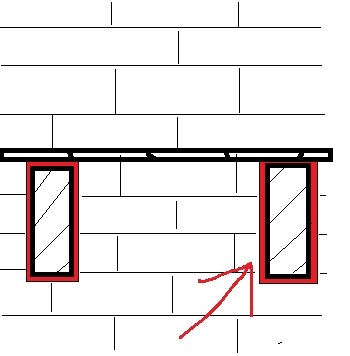 Even the most securely fixed joist using sand cement can, over years of use, potentially loosen in its place. This movement is simply due to the joist's potential to shift within the wall.
Even the most securely fixed joist using sand cement can, over years of use, potentially loosen in its place. This movement is simply due to the joist's potential to shift within the wall.
As seen from the picture, this can cause the joist to move within the wall, consequently resulting in the wood rubbing against the brick, leading to an unpleasant creaking sound.
PREVENTION
To prevent this, simply remove the carpet, unscrew the floorboards, and access all the squeaky floor joists. Fill the gaps around the joists with sand cement. This will provide greater stability to the joists and eliminate unnecessary noise.
There's an increasingly popular faster method to address this issue. Namely, it involves drilling a revision hole around the squeaking joist and injecting expanding foam around the joist. This method additionally eliminates thermal bridges.
CONNECTION BETWEEN FLOORBOARDS AND WOODEN JOISTS
The second and one of the most frequent spots where the floor tends to squeak is where the floorboards meet the floor joists. This particular area generates an unpleasant noise that bothers our ears.
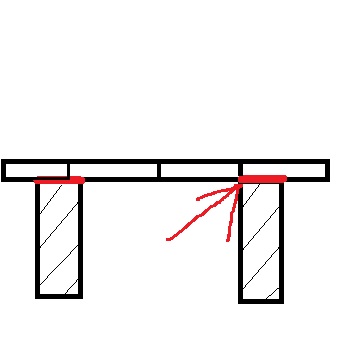 This noise becomes more annoying with its frequency. So, when the floorboards and joists are dried out, it's almost certain that this problem will occur in our homes.
This noise becomes more annoying with its frequency. So, when the floorboards and joists are dried out, it's almost certain that this problem will occur in our homes.
The sound of wood rubbing against wood isn't pleasant, and over time, it can become quite irritating, especially when it persists for extended periods.
PREVENTION
The easiest way to stop the noise of a creaky floor at the point where floorboards meet joists is by isolating them from each other. The ideal solution appears to be a thin, self-adhesive acoustic foam strip. Its minimal thickness won't impact the floor's height at all.
This strip serves as an excellent and effective remedy to get rid of the squeaking floor issue. It's reasonably priced, and its self-adhesive nature makes installation a breeze. Setting up this strip can be done independently, eliminating the need to hire someone for the installation.
ISSUES WITHIN THE JOINTS OF THE FLOORBOARDS THEMSELVES
The third place where floor squeaking happens is the connection between floorboards that run parallel to each other. Sometimes, these boards aren't properly installed, and the most common problem occurs when they are fitted too tightly, causing friction between them.
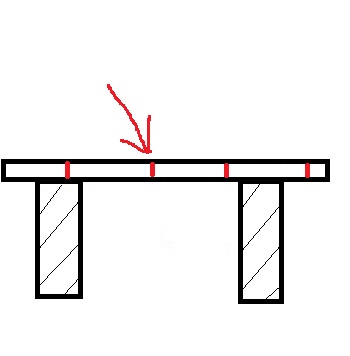 The problem arises when floorboards are installed too tightly, causing pressure at the joints when walking. This pressure creates a force that makes the joint resist, leading to the squeaky noise we hear.
The problem arises when floorboards are installed too tightly, causing pressure at the joints when walking. This pressure creates a force that makes the joint resist, leading to the squeaky noise we hear.
To make matters worse, the tighter the floorboards are installed, the more noticeable the rubbing between them becomes.
Properly installed floorboards should have a small gap between them, usually around 4-6mm. This gap is crucial as it prevents direct contact between the floorboards, effectively eliminating any noise generation.
PREVENTION
A quick and easy fix involves removing and reinstalling all the floorboards, making sure there's a gap of around 4-6mm between each board. You could use a simple trick like taping together four old credit cards to use as spacers while putting the floorboards back in place.
MISSING SCREWS OR NAILS
In a home, all floorboards should be securely fixed using screws or nails. Sometimes, contractors might skip some screws to save time or money during renovations.
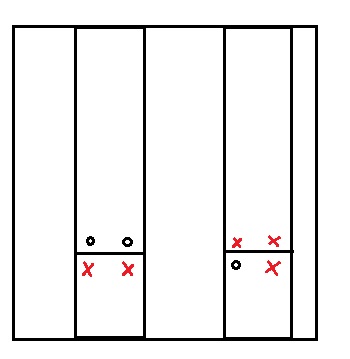 When floorboards aren't fully secured, it's unsafe and creates noisy floors when walked on. Ensuring they're properly fastened is crucial. We can't overlook this; it's important to inspect the contractor's work. Ignoring this could lead to moving furniture, taking out carpets, and adding missing screws to solve the issue.
When floorboards aren't fully secured, it's unsafe and creates noisy floors when walked on. Ensuring they're properly fastened is crucial. We can't overlook this; it's important to inspect the contractor's work. Ignoring this could lead to moving furniture, taking out carpets, and adding missing screws to solve the issue.
Wondering if there are any screws or nails missing under the carpet in that specific spot? One easy method is using a metal detector. Alternatively, you can try pressing down on the board around 50cm earlier. If you feel the board lifting the carpet, it's quite likely there aren't any screws or nails in that area.
PREVENTION
Once you identify where screws are missing in the floorboards, the simplest fix is to lift the carpet and add a few extra screws. This will reinforce their grip and get rid of the floor squeaking.
Another method, involves using chipboard with an interlocking system. These large boards can be placed across the floorboards. However, this approach might raise the floor's height, which might not always be practical.
LACK OF CONNECTING ELEMENTS AT THE JOINTS BETWEEN BOARDS
It's quite common for floorboards to be connected at specific points. When this joining occurs directly on a floor joist, there's usually no issue. However, things get trickier when a board ends just before reaching a floor joist. At this point, it's essential to somehow connect these floorboards together. Surprisingly, not everyone takes this step. Some leave these board connections without any support, relying solely on the carpet underlay and the carpet itself to handle it. Others justify it by assuming furniture like a bed or a wardrobe will cover it anyway.
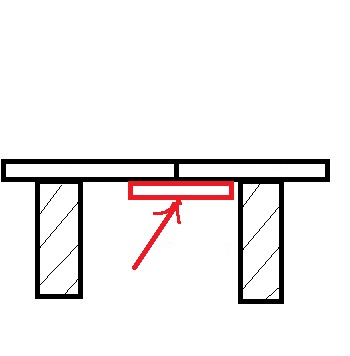 To some extent, this might seem reasonable. But what if we become the lucky owners of such a property and decide to rearrange the room layout? We move the furniture around, and suddenly, the floor starts squeaking as it flexes. The problem reappears, requiring us to remove the carpet once more and fix all those floorboard connections.
To some extent, this might seem reasonable. But what if we become the lucky owners of such a property and decide to rearrange the room layout? We move the furniture around, and suddenly, the floor starts squeaking as it flexes. The problem reappears, requiring us to remove the carpet once more and fix all those floorboard connections.
PREVENTION
To prevent floorboards from squeaking at these joints, it's crucial to provide proper support by using additional bridging boards. These bridging boards should be at least double the length of the floorboards' width and securely fastened beneath the floorboards using multiple screws.
A robust and firm connection between the boards will stabilise the floor, providing a sturdy base for laying the carpet underlay.
FLOORBOARDS CUT TOO SNUGLY
We English take pride in having such a large number of carpenters in our country. Some of them are not very careful, while others are too picky. But when it comes to covering floor joists with floorboards, it is not good to choose the super careful carpenter. Why?
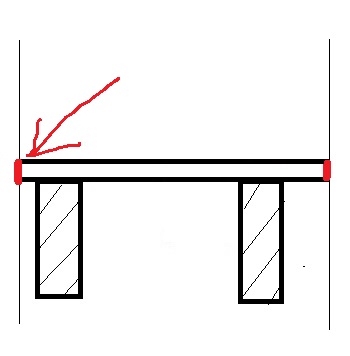 Here's the thing: being too precise often leads to a specific problem. They cut the boards almost perfectly to fit the room, even nailing them super tightly from one end to the other. But this ultra-tight setup makes the floor squeak near the walls.
Here's the thing: being too precise often leads to a specific problem. They cut the boards almost perfectly to fit the room, even nailing them super tightly from one end to the other. But this ultra-tight setup makes the floor squeak near the walls.
In the UK, houses commonly feature suspended floors. When floorboards are fitted without sufficient gap around, walking on them exerts pressure against the walls, leading to irritating sounds.
PREVENTION
A good way to stop the floor from squeaking around the room's edges is by unscrewing the end floorboards and cutting them about 5-6mm shorter. It's also helpful to use a perimeter strip available in our shop. This strip not only prevents floor squeaks along the edges but also fills any gaps around the perimeter, making the floor quieter and blocking dust and debris from coming through underneath.
DRYING OF THE BOARDS - USING MATERIALS WITH EXCESSIVE MOISTURE CONTENT
Every cut tree holds a considerable amount of water. While this moisture might be okay during the cutting process, it's not good when working with the wood. It can lead to discoloration, even fungi growth on the board's surface. So, using floorboards made from freshly cut trees isn't recommended.
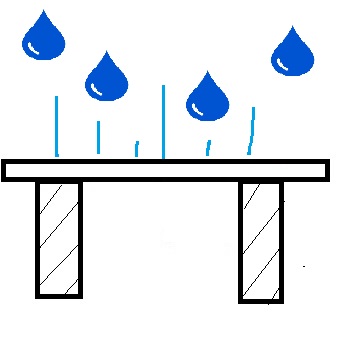 The right floorboards should have a moisture content below 8%. Achieving this involves drying them in specialised dryers. Removing moisture ensures the boards maintain their dimensions for years and prevents fungal growth when covered with carpet.
The right floorboards should have a moisture content below 8%. Achieving this involves drying them in specialised dryers. Removing moisture ensures the boards maintain their dimensions for years and prevents fungal growth when covered with carpet.
However, it's common on construction sites to use floorboards left outdoors for long periods. Tight renovation schedules push contractors to rush, leading them to install these water-soaked boards quickly indoors without proper drying.
Imagine most floorboards were stored outside during renovations. Wet boards brought inside will dry, changing their dimensions and potentially causing problems like gaps or squeaks between the boards.
Mounting wet floorboards can cause:
Shrinking: Wet boards, when mounted, can reduce in size after drying, resulting in gaps between them or even deformation.
Squeaking: Wet boards, when installed, may later produce squeaks as they dry and change their dimensions.
Difficulty in joining: Wet boards may make assembly more challenging since they might be more flexible and less stable.
Impact on floor quality: Mounting wet boards may adversely affect the final floor quality, leading to durability and strength issues.
PREVENTION
The only sensible method to prevent these problems is to unscrew such boards and subject them to the drying process or replace them with new ones with a moisture content not exceeding 8%.
HOW MUCH DOES IT COST TO FIX SQUEAKY FLOORS UNDER CARPET?
 To fix a squeaky floor under a carpet, in most cases, you'll need to lift the carpet and screw individual floorboards. While this might not be a problem around walls, repairing a squeaky floor in the middle of a room will require lifting the entire carpet. Often, this involves moving furniture such as beds, wardrobes, or tables, which can require significant force.
To fix a squeaky floor under a carpet, in most cases, you'll need to lift the carpet and screw individual floorboards. While this might not be a problem around walls, repairing a squeaky floor in the middle of a room will require lifting the entire carpet. Often, this involves moving furniture such as beds, wardrobes, or tables, which can require significant force.
Many people decide to repair a squeaky floor themselves, thus cost is not a concern in such cases. However, what if someone wants to hire someone else to fix the squeaky floor under the carpet? How much does it cost and what does it involve?
To illustrate the situation, you must consider that the room will need prior preparation. This involves removing all personal belongings. It cannot be expected that a builder will empty drawers or move books for us.
So, once the room is prepared, the decision of whom to choose should be made.
It would be best to choose an experienced carpenter to remove the squeaky floor under the carpet. While fixing the squeaky floor can be one man, moving heavy and bulky furniture cannot. Therefore, hiring a labourer will be necessary.
Considering the costs involved, one must automatically account for the cost of two full working days. A skilled carpenter should manage in a day. In an optimistic scenario, this should cost around £200- £300 plus approximately £150 for the labourer. When factoring in the costs of screws, nails, or an acoustic strip roll, the total costs sum up to about £550.
The £550 amount represents the most optimistic option for removing a squeaky floor under a carpet. However, if for any reason, it's necessary to improve floor joist within solid wall, this might extend the process by an additional 2 days, increasing the cost to around £1100.
Therefore, the maximum amount you should expect to spend on removing a squeaky floor under a carpet is £1100. The cheaper option, of course, is to do it yourself.
WILL WD-40 STOP FLOORBOARDS CREAKING?
WD-40 is a versatile chemical solution primarily aimed at loosening rusted screws. It's also handy for various other purposes, like lubricating keys or door lock mechanisms, making it a common household item.
So, when dealing with a squeaky floor under a carpet, one might wonder if WD-40 could solve this irritating noise?
Well, using WD-40 can temporarily silence the squeaks. For instance, spraying it on the connection between two floorboards can hush the noise briefly. But here's the catch: after a few days or weeks, the WD-40 evaporates, dries up, and the squeak returns.
Therefore, rather than just using WD-40 to stop the squeak, it's best to fix the main reason behind the noise.
DO FLOORBOARDS CREAK MORE IN WINTER?
 Winter is a time when the squeaking under a carpet can get worse, especially when it's really cold. This happens because of how things work with heat and cold. When it's cold, wood shrinks and gets stiffer. You'd think this might stop the floor from squeaking because the gaps between the floorboards get bigger. But the real problem is somewhere else.
Winter is a time when the squeaking under a carpet can get worse, especially when it's really cold. This happens because of how things work with heat and cold. When it's cold, wood shrinks and gets stiffer. You'd think this might stop the floor from squeaking because the gaps between the floorboards get bigger. But the real problem is somewhere else.
Even though the wood gets smaller in winter and shouldn't squeak, if you look closely at the screws and how the floorboards are put together, that's where the issue starts. As the wood shrinks, it presses against the nails or screws, making them tight. Any little movement in those spots causes an annoying squeak.
Think of it like trying to unscrew something from frozen wood covered in snow. The noise gets louder as soon as you start turning the screw, and it's really unpleasant. This noise keeps going until you've completely unscrewed it from the wood.
So, yeah, floorboards tend to squeak more in winter because of how wood behaves during this time.
HOW DO PROFESSIONALS FIX SQUEAKY FLOORS?
The principle of fastening floorboards is simple - they're secured using screws or nails. There are no exceptions to this rule for professionals who install these boards. They don't employ any special or magical techniques beyond those previously discussed. However, the approach changes a bit when using floor chipboard with tongue and groove connections.
Professionals utilise nails and pneumatic guns for installing this type of underlayment. These nails, once in place, remain unseen as they are shot at an angle into each chipboard joint. Yet, the expenses tied to acquiring an air compressor and pneumatic gun are quite high, making it cost-ineffective to install such boards independently. In such cases, hiring professional floor installers is recommended.
Speaking of professionals, it's essential to know that these individuals perform such tasks regularly. Dealing with noisy floors is part of their routine, and fixing them poses no major challenge, becoming part of their work habits. Professionals use specialised tools, perform the task relatively quickly, and precisely know the appropriate screw types needed. So, if you want to learn how they do it, watching a few videos on YouTube would be worth your while. As of today it's the best source of knowledge for all DIY enthusiasts.
HOW DO YOU PERMANENTLY FIX SQUEAKY FLOORS?
To stop the annoying squeaks under the carpet once and for all, here's what you can do: put a thin foam layer between the wooden parts, make sure all the floorboards are tightly screwed into the beams below, and support the connections between them from underneath. Doing these simple things will keep the floor quiet and squeak-free for good.
ARE SQUEAKY FLOORS A STRUCTURAL PROBLEM?
Squeaky floors typically aren't a sign of a structural problem. Instead, they are often caused by the movement or rubbing of wooden floorboards against each other, subfloor components, or the floor joists. In most cases, the issue arises due to natural wear and tear, changes in humidity, or the settling of the house over time. However, persistent or severe squeaks might indicate some minor issues in the flooring, such as loose floorboards or improperly installed subflooring, rather than a major structural concern. If you're uncertain or notice significant changes in the floor's stability along with the squeaks, it's advisable to consult a professional for a thorough inspection to rule out any structural issues.
CONCLUSION
Summing up, there are several possible reasons causing floor squeaking under the carpet. The frequent offenders are often the lack of screws or reinforcement pads at the joints of the floorboards. To remedy the issue of squeaky floors under carpet, using an acoustic strip is an effective solution. This strip doesn’t raise the floor level and efficiently muffles the noise throughout the entire room. Installing floorboards with high moisture content often leads to undesirable consequences like fungal growth or squeaks resulting from quick drying. Identifying the root causes of floor squeaks is relatively straightforward and doesn’t demand specialised expertise. By tackling these fundamental issues, one can confidently bid farewell to these ear-grating noises, leaving everything looking professionally installed.
Related articles:
DOUBLE INSULATION LAYERS: INSTALLATION TIPS
EFFECTIVE STRATEGIES TO SOUNDPROOF AGAINST NOISY NEIGHBOURS
INSULATING AN OLD STONE HOUSE: FINDING THE PERFECT BALANCE
THE SOUNDPROOFING POWER OF WOOL: UNVEILING THE TOP CHOICES
STEP-BY-STEP GUIDE: HOW TO INSTALL CELOTEX BOARD BETWEEN FLOOR JOISTS
THE UGLY TRUTH ABOUT ROCKWOOL AS A SOUNDPROOFING MATERIAL?
*Insulationgo LTD strives to keep the content accurate and up-to-date, but we cannot be held responsible for any mistakes or exclusions.
The information in this blog isn't expert advice and shouldn't replace talking to the right specialists. Before buying or deciding anything based on this info, it's best to contact the product manufacturer directly to double-check if it's right for what you need.
Descriptions, drawings, photographs, data, proportions, weights, and measured values provided here may change without prior notice and do not establish the guaranteed contractual quality of the products. The recipient of these products holds the responsibility to comply with proprietary rights, existing laws, and legislation.
Using this blog implies acknowledgment and agreement that Insulationgo LTD cannot be held accountable for any damages, losses, or inconveniences resulting from the use or reliance upon the information provided. This limitation of liability extends to all users of the blog, including visitors, readers, and subscribers.










































































































